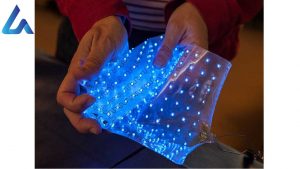Harvard and MIT researchers are developing a face mask that lights up when it detects the coronavirus.For the past six years, bioengineers at MIT and Harvard have been developing sensors that can detect viruses. Including the ones that cause Zika and Ebola. They’re adapting their technology to screen for the new coronavirus.
The team hopes to embed the sensors inside face masks so that when an infected person breathes, coughs, or sneezes, the sensors light up to signal the presence of the virus.
Coronavirus detecting mask
The Research
In 2014, Jim Collins bioengineering laboratory at MIT began developing sensors that could detect the Ebola virus when it was freeze-dried onto a piece of paper. The small team of scientists from MIT and Harvard first published their research in 2016; by then, they’d tailored the technology to address the growing threat of the Zika virus.
Now, they’re adjusting their tool again to identify coronavirus cases.
The team is designing a face mask to produce a fluorescent signal when a person with the coronavirus breathes, coughs, or sneezes. If the technology proves successful, it could address flaws associated with other screening methods like temperature checks.
Doctors might even use them to diagnose patients on the spot, without having to send samples to a laboratory. At a time when testing snafus and delays have hampered many countries’ ability to control outbreaks, tools that quickly identify patients are critical.
A fluorescent signal could show whether coronavirus is present in saliva
Collins says his lab’s current project is in the “very early stages,” but the results have been promising. For the past few weeks, his team has been testing the sensors’ ability. Wether it can detect the novel coronavirus in a small saliva sample.
The team is also experimenting with design. Right now, the lab is debating whether to embed sensors on the inside of a mask or develop a module that can be attached to any over-the-counter mask.
“Once we’re in that stage, then it would be a matter setting up trials with individuals expected to be infected to see if it would work in a real-world setting,” Collins said.
The virus-identifying technology more generally, however, is already proven. By 2018, the lab’s sensors could detect viruses that cause SARS, measles, influenza, hepatitis C, West Nile, and other diseases.
“We initially did this on paper to create inexpensive paper-based diagnostics,” Collins said. “We’ve shown it can work on plastic, quartz, as well as cloth.”

A quicker, more accurate way to diagnose patients
Collins is considered a pioneer of synthetic biology, a field that uses engineering to redesign systems found in nature. He won a MacArthur genius grant in 2003. In 2018, his lab got a $50,000 grant from Johnson & Johnson to develop embeddable virus-detecting sensors for lab coats.
The sensors might offer a cheaper, quicker, and more sensitive form of detection than traditional diagnostic tests. The lab’s sensors for Zika, for example, can diagnose patients within two to three hours. The team estimated in 2016 that the sensors cost about $20 each, while the test itself was $1 or less to manufacture.
Corona virus detecting mask
A replacement for temperature checks
But temperature checks miss a large swath of infections, including patients who are asymptomatic or pre-symptomatic or are experiencing symptoms other than a fever. Collins thinks his sensors could identify more cases by detecting the virus itself, rather than its symptoms.
The lab’s aspirational goal, he said, is to begin manufacturing masks for public distribution by the end of summer.
“Right now we’re time-constrained and talent-constrained in that we’ve got a relatively small team,” he said. “We’re limited in how many we can have in the lab working, and they’re all working as hard as they can.”
Author:
Asif Hossain
You may also read
- Coronavirus killing fabric
- Top 20 Interesting Facts On T-Shirts
- Top 17 Unknown Facts of Silk Fiber
- Washable Batteries for fabrics
- Properties and uses of Jute fiber
- Types of Silk Worm
You may like our official FaceBook page. We provide knowledge about the most astonishing and uncommon facts about Textile and upcoming technology.


